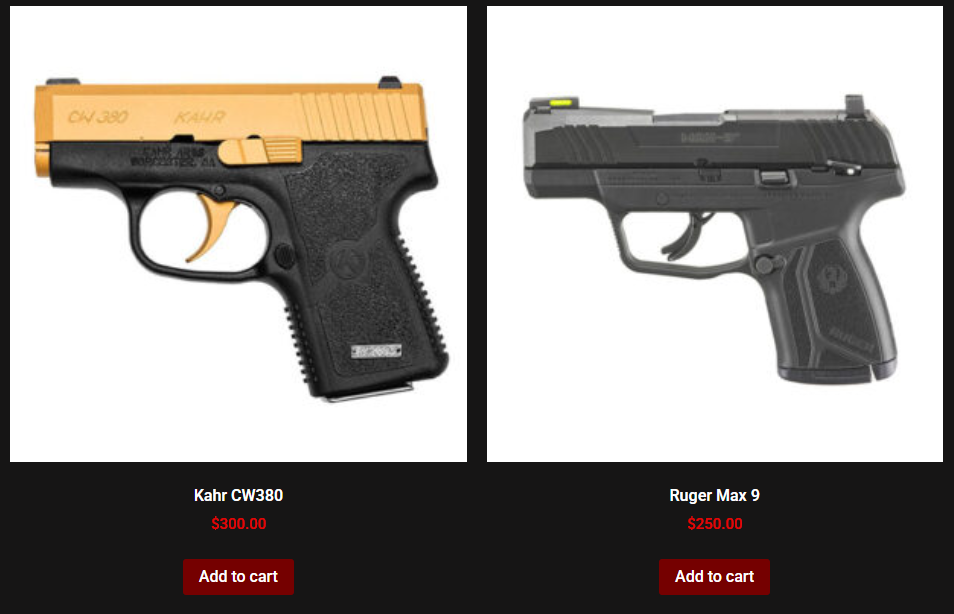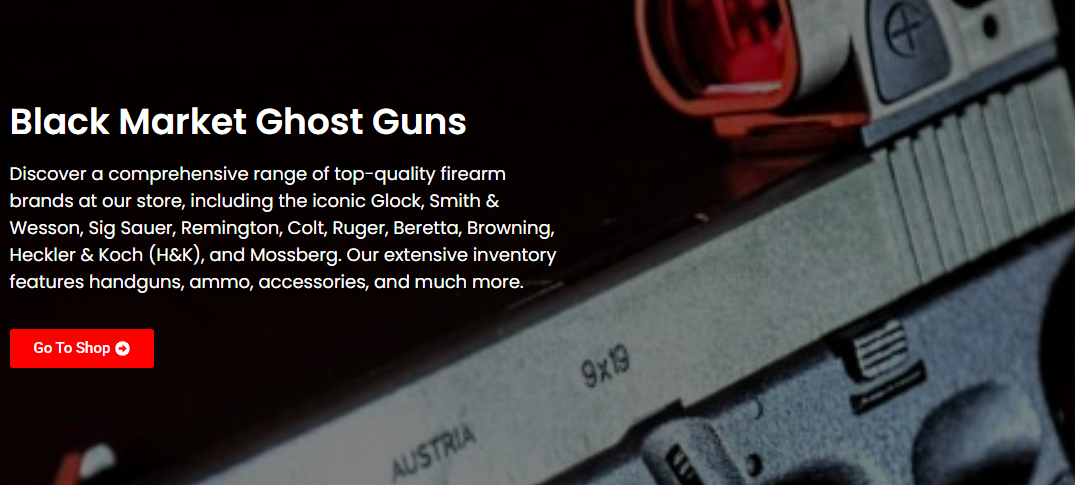Shadows in the Shadows: The Rise of Ghost Guns and the Black Market Firearms Trade
In the underbelly of America's firearms landscape, where legality blurs into anonymity, ghost guns and black market handguns thrive as silent epidemics. These untraceable weapons—assembled from kits or scavenged parts—evade serial numbers, background checks, and the watchful eye of federal regulators. As Ghost gun for sale of October 2025, with over 512 million firearms produced for the U.S. market since 1899, the legal gun industry dwarfs its illicit counterpart, yet the black market claims a deadly share: an estimated 68,388 firearms trafficked illegally between 2017 and 2021 alone, fueling urban violence from Chicago to Los Angeles. This article delves into the mechanics of ghost guns for sale, the sprawling black market for guns, and the no-FFL (Federal Firearms License) loopholes that make them accessible. Drawing on recent ATF data, Supreme Court rulings, and law enforcement insights, we explore how these shadows arm criminals, endanger communities, and challenge the nation's gun control framework.
The Anatomy of a Ghost Gun: Untraceable by Design
Ghost guns, also known as privately made firearms (PMFs), are weapons built from unfinished frames or receivers—often 80% complete kits—that buyers finish at home with basic tools like drills and files. Unlike commercial firearms, they lack serial numbers, making them "ghosts" to trace when recovered at crime scenes. The term gained traction in the 2010s as online retailers like Polymer80 flooded the market with kits marketed as "unregulated" and "DIY defense builds."
These kits exploded in popularity during the COVID-19 pandemic, with sales surging alongside legal gun purchases. ATF estimates show over 70,700 suspected ghost guns recovered by law enforcement from 2016 to 2022, with two-thirds in just 2021 and 2022. In California, they now represent 30% of crime guns traced, often wielded by prohibited persons like felons or domestic abusers who skirt background checks.
Construction is disarmingly simple. A Glock-style pistol kit might cost $200–$400 online, including barrels, slides, and jigs for milling the receiver. Advanced users turn to 3D printers, downloading blueprints from dark web forums to fabricate plastic frames that mimic metal ones. Sites like GhostArmory and Firearms Unknown openly advertise "ghost guns for sale" with promises of Bitcoin payments and worldwide shipping, bypassing FFL requirements. One vendor boasts: "Untraceable guns market—no FFL, permits, or licenses required."

Yet, this ease masks peril. In December 2024, a 3D-printed ghost gun was allegedly used to assassinate UnitedHealthcare CEO Brian Thompson in Manhattan, spotlighting their role in high-profile violence. Gracie Muehlberger, a 15-year-old killed in the 2019 Saugus High School shooting, fell to a ghost gun assembled by the shooter, who was legally barred from buying firearms. These weapons don't just kill; they vanish into investigations, leaving families and detectives grasping at voids.
The Black Market Guns Ecosystem: No FFL, No Mercy
The black market for guns operates as a Ghost guns for sale shadowy parallel economy, where "no FFL" sales—transactions without licensed dealers—dominate. Federal law mandates FFLs for commercial sales, including background checks via the National Instant Criminal Background Check System (NICS). But private sales, gun shows, and online forums exploit loopholes, allowing guns to flow unchecked.
ATF's 2025 National Firearms Commerce and Trafficking Assessment reveals unlicensed dealers supplied 54% of illegally trafficked guns from 2017–2021, outpacing straw purchases (40%) and thefts (18% from FFLs). Black market handguns, prized for concealability, command premiums: a street Glock might fetch $500–$1,000, double retail, per dark web listings. Platforms like Armslist and darknet markets (e.g., Black Market Guns) facilitate this, with vendors offering "stealth packaging" to Australia and beyond.
Trafficking corridors amplify the danger. Chicago PD's 2025 Gun Trace Report shows 60% of crime guns originate outside Illinois, smuggled from lax states like Indiana. Nationally, 46% of traced crime guns from 2022–2023 involved Straw buying—proxies purchasing for prohibited persons—accounts for another vector, often via social media or peer-to-peer apps.
In urban hotspots, black market guns fuel cycles of violence. Philadelphia recovered 1,500 ghost guns in 2024, many linked to gang retaliations. A 2025 Johns Hopkins survey found 67% of Trump voters and 69% of Republicans support regulating DIY kits like commercial firearms, underscoring bipartisan alarm.
Dangers Amplified: From Street Corners to Mass Shootings
Black market firearms aren't just tools of crime; they're accelerators of tragedy. Untraceable and unmodified, they enable rapid escalation. In 2023, ATF traced 1.3 million crime guns, up 52% from 2017, with 56% showing purchaser-possessor mismatches—hallmarks of trafficking. Handguns dominate, comprising 20% more of traces by 2021.
The human toll is staggering. Every day, 125 Americans die by gunfire, with black market weapons implicated in half of urban homicides. Youth access is a crisis: minors, barred from legal buys, assemble ghost guns from online tutorials, contributing to school shootings like Saugus. Internationally, dark web sales export this Black market handguns menace; Australian studies found 1,497 handguns listed in 2019, many "ghosted" via serial erasure.
Communities bear the brunt. In Baltimore, ghost gun recoveries dropped post-2022 regulations, but persist among prohibited users: felons, youth, and abusers. Economically, violence costs $557 billion annually in medical bills, lost productivity, and policing. As one ATF agent noted, "These guns turn hobbies into homicides."
Regulatory Reckoning: From Biden Rule to Supreme Court Victory
Efforts to curb this trade culminated in the 2022 ATF rule, redefining "firearm" to include kits "readily convertible" to functional weapons. Sellers must license, serialize, and background-check buyers—ending the no-FFL free-for-all. Polymer80 shuttered amid lawsuits, and traces plummeted in regulated states.
Gun groups challenged it, arguing kits aren't "firearms" under the 1968 Gun Control Act. In March 2025, the Supreme Court upheld the rule 7-2 in Bondi v. VanDerStok, affirming ATF authority over "weapon parts kits and unfinished receivers." Justice Gorsuch's opinion noted the challengers' concession on prior ATF practices, solidifying the win.
States lead too: 12 require serialization and checks for ghost guns, while California and New York ban unserialized possession outright. The 2023 Ghost Guns and Untraceable Firearms Act proposes federal bans on manufacture and sale, with engraving mandates. Yet, 3D printing evades some rules; Rep. Jared Moskowitz's bill targets blueprints.
Critics decry overreach, but data counters: Baltimore's post-rule drop proves efficacy.<grok: Enforcement gaps remain—Trump's ATF review could rollback gains—but public support (69% of Republicans) signals momentum.
Closing the Loopholes: A Path Forward
Ghost guns for sale and black market handguns no FFL aren't abstract threats; they're the unserialized threads weaving through America's gun violence tapestry. With 1.5 million crime guns traced from 2018–2022, half bought within three years, the pipeline from legal to lethal is clear. Solutions demand balance: universal Ghost guns for sale checks for private sales, 3D blueprint bans, and trafficking penalties rivaling drugs (not livestock).
